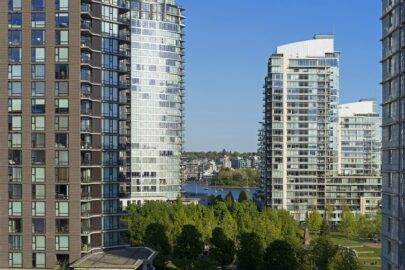The Royal Institution of Chartered Surveyors (RICS) has announced a change in valuation guidance which it believes will help unlock the flat market for buyers and sellers.
The new guidance, Valuation of properties in multi-storey, multi-occupancy residential buildings with cladding, clarifies types of properties which will, and those which will not, require additional inspections, as a result of concerns about fire safety.
The guidance is the result of consultation with valuers, leaseholders, lenders fire safety experts and government.
Dame Janet Paraskeva, chair of the RICS Standards & Regulation Board which approved the guidance last week, said: “We recognise the significant distress caused to leaseholders struggling to sell flats in blocks with external cladding. This announcement is a crucial step in unlocking the market, by ensuring that only those buildings where there are risks of costly remediation as a result of safety concerns from cladding are subject to additional checks. The guidance is anticipated to result in a reduction in the number of EWS1 requests which will therefore allow more focus on the assessments of higher risk buildings, which should speed up the overall process whilst ensuring appropriate protection for lenders and purchasers. “
RICS will now work with UK government and other stakeholders to ensure the guidance is implemented by 5 April 2021. In order to assist consumers, RICS will shortly produce consumer guidance to inform buyers and sellers about the information that might be available to help them understand the risks of a property in a multi-story, multi occupancy building.
The guidance creates clarity and consistency about when a valuer is not required to request further investigation of cladding through an EWS1 form before valuing a property in a building of multiple occupation.
As a result of the consultation, the new guidance makes clear that where a valuer or lender can establish that the building owner has met the advice in the consolidated advice note, an EWS1 form should not be required, nor would an EWS1 form be required for a building that is over 18 metres that has a valid building control certificate in place.
RICS said that safety requirements mean that, unfortunately, not all flat-owners can benefit from this measure. While originally not proposed in the initial document that went out for public consultation, but in the light of the evidence received during the consultation, buildings of any height that have high pressure laminate (HPL) cladding and those of five stories or higher with combustible cladding linking balconies, will still need an EWS1 form. This will provide appropriate protection for lenders and purchasers
Ben Elder, RICS’ head of valuation standards, said: “This guidance provides a framework for consistency across the mortgage valuation sector as to when an EWS1 form is required. We are pleased to see, from the consultation responses, that many believe that the guidance will reduce the number of EWS1 forms requested. We have reached our final position following very careful consideration of the evidence to ensure that buildings at higher risk of remediation work are appropriately investigated in the valuation process, to support reliable advice by valuers to their lender clients.
With the majority of lenders in support of the guidance, we now call on all UK lenders to support the guidance and work with their valuation providers to implement.”
